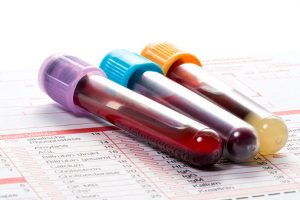
Although there is no definite blood test to diagnose rheumatoid arthritis, a positive rheumatoid factor test can shed light on whether someone has the condition or not. What is undetermined is whether high levels of this antibody indicate later-life rheumatoid arthritis. Researchers from Denmark set out to test this.
For their study, researchers measured rheumatoid factor levels in 9,712 Danish individuals without rheumatoid arthritis who were followed for 28 years. Raised rheumatoid factor levels of 25-50 IU/mL, 50.1-100 IU/mL, and more than 100 IU/mL were compared with normal levels (less than 25 IU/mL).
During the course of the study, 183 individuals developed rheumatoid arthritis. After adjusting for other risk factors for rheumatoid arthritis, a doubling of rheumatoid factor levels was associated with a 3.3-fold increased risk of developing rheumatoid arthritis. The highest levels of rheumatoid factor were associated with a 26-fold increase in the rheumatoid arthritis risk.
Although the researchers cannot prove that rheumatoid factor levels are the cause of rheumatoid arthritis, they wrote, “[the findings] may lead to revision of guidelines for early referral to a rheumatologist and early arthritis clinics based on a positive rheumatoid factor test – even in the absence of the typical arthritic joint symptoms.”
Understanding rheumatoid factor (RF)
Rheumatoid factor tests measure the levels of rheumatoid factor proteins in your blood. RF proteins are produced by the immune system and can attack healthy tissue in the body.
Although high levels of rheumatoid factor could be an indication of a developing rheumatoid condition, these proteins may be found in healthy individuals, too.
Testing for rheumatoid factor not only helps track the progression of a rheumatoid condition, but it can also help narrow in on the most effective treatment available.
Rheumatoid factor levels and test results
Rheumatoid factor proteins are measured either in titers or units. A titer is a measurement of how much blood can be diluted before the RF can no longer be detected.
Nephelometry units show how much light is blocked by the blood sample in a tube. When rheumatoid factor is high, the sample is cloudy so less light can pass through, as opposed to low RF sample, which allows more light to pass.
A normal reading of rheumatoid factor in titers is 1:80, or less than 60 units per milliliter (U/mL).
High levels of rheumatoid factors may be caused by rheumatoid arthritis, other autoimmune conditions, infections, liver disease, heart infection, and leukemia.